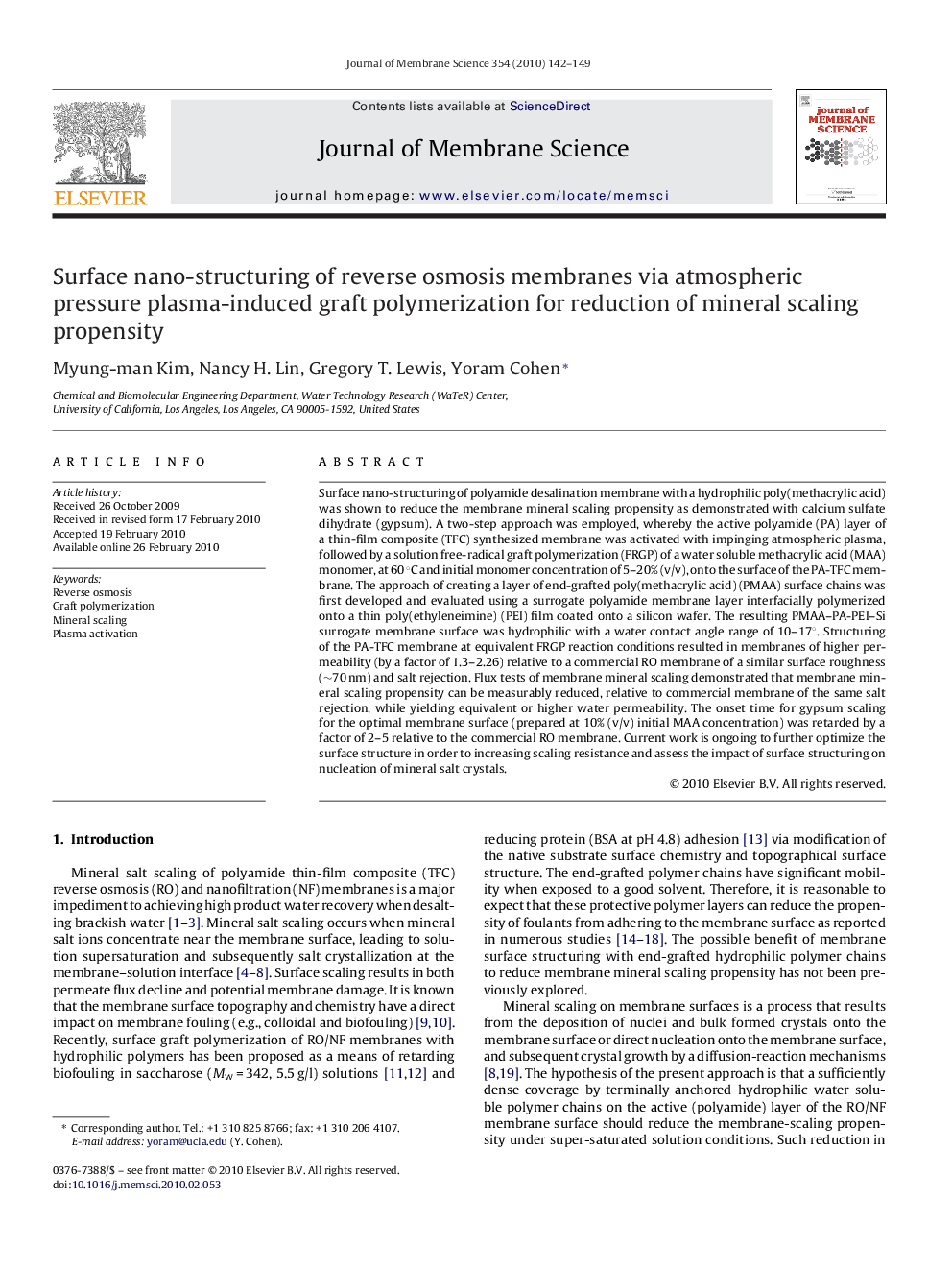| کد مقاله | کد نشریه | سال انتشار | مقاله انگلیسی | نسخه تمام متن |
|---|---|---|---|---|
| 636327 | 1456125 | 2010 | 8 صفحه PDF | دانلود رایگان |

Surface nano-structuring of polyamide desalination membrane with a hydrophilic poly(methacrylic acid) was shown to reduce the membrane mineral scaling propensity as demonstrated with calcium sulfate dihydrate (gypsum). A two-step approach was employed, whereby the active polyamide (PA) layer of a thin-film composite (TFC) synthesized membrane was activated with impinging atmospheric plasma, followed by a solution free-radical graft polymerization (FRGP) of a water soluble methacrylic acid (MAA) monomer, at 60 °C and initial monomer concentration of 5–20% (v/v), onto the surface of the PA-TFC membrane. The approach of creating a layer of end-grafted poly(methacrylic acid) (PMAA) surface chains was first developed and evaluated using a surrogate polyamide membrane layer interfacially polymerized onto a thin poly(ethyleneimine) (PEI) film coated onto a silicon wafer. The resulting PMAA–PA-PEI–Si surrogate membrane surface was hydrophilic with a water contact angle range of 10–17°. Structuring of the PA-TFC membrane at equivalent FRGP reaction conditions resulted in membranes of higher permeability (by a factor of 1.3–2.26) relative to a commercial RO membrane of a similar surface roughness (∼70 nm) and salt rejection. Flux tests of membrane mineral scaling demonstrated that membrane mineral scaling propensity can be measurably reduced, relative to commercial membrane of the same salt rejection, while yielding equivalent or higher water permeability. The onset time for gypsum scaling for the optimal membrane surface (prepared at 10% (v/v) initial MAA concentration) was retarded by a factor of 2–5 relative to the commercial RO membrane. Current work is ongoing to further optimize the surface structure in order to increasing scaling resistance and assess the impact of surface structuring on nucleation of mineral salt crystals.
Journal: Journal of Membrane Science - Volume 354, Issues 1–2, 15 May 2010, Pages 142–149